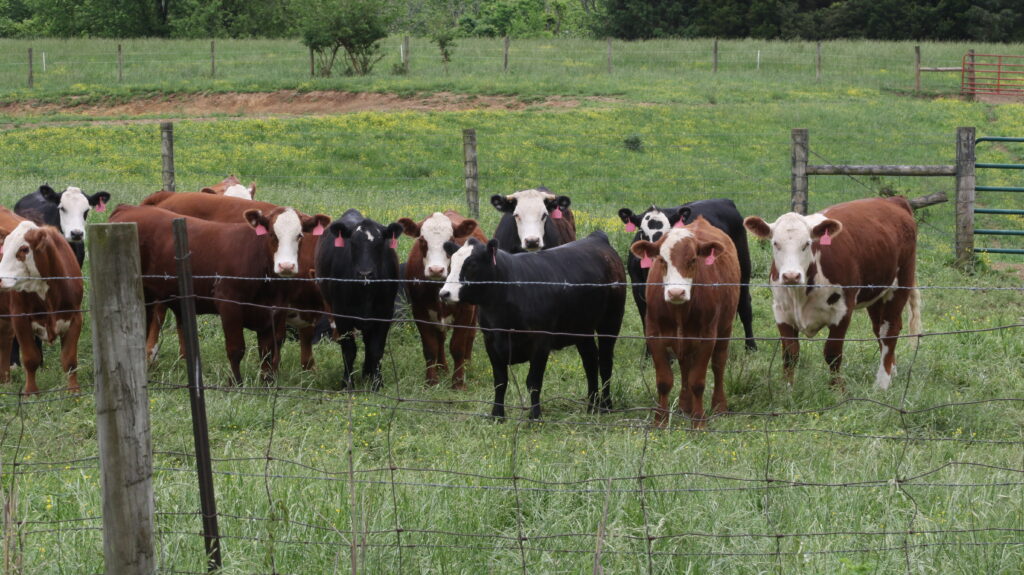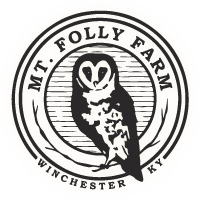Dear Friends,
As an organic farmer, the oddest thing about buffalo clover is that it does not have a symbiotic relationship with bacteria to form root nodules to fix nitrogen. We’ve all learned to plant clover, alfalfa or peas before organic cash crops like corn or sunflowers. This legume doesn’t need this magic trick. Why? The answer is in its name: buffalo clover.

There once were enormous herds of buffalo in our area, which includes Eskippakithkiki, a 5,000-acre fertile, flat cane land bordered by Upper Howards Creek, a small part of which is on our farm. Our agreement with Kentucky Nature Preserves reads, “Whereas, the Office of Kentucky Nature Preserves recognizes that Mt. Folly Farm contains Kentucky’s largest known population of the endangered running buffalo clover (Trifolium stoloniferum). Most of this population occurs is sparsely wooded areas in the creek floodplain. Mt. Folly’s cattle act much as bison did prior to settlement, trampling on the plants and the surrounding vegetation to open up more habitat;”
The strongest theory about why buffalo clover doesn’t need bacteria to fix nitrogen is that ruminants, buffalo, were doing it for them! Like cattle, buffalo are walking compost bins.

By rotating our cattle into the creek bottom roughly 5 times a year, we mimic the past.
On a hill farm like Mt. Folly, most of our land is grazing only. On organic cash crop ground, part of the rotation includes 3 years of pasture, which improves soil structure, adds nutrients, and reduces (we hope, always) weeds. We try to rotationally graze our walking compost bins on this crop ground, in addition to rolling hills and hillsides.
But back to buffalo clover: It was believed to be extinct after the dust bowl, until two strands were found in West Virginia. It is still considered under threat. The plant propagates by seed and runners. Indeed, when I was looking at a specimen last week, it reminded me of a strawberry plant!
Why did it become endangered? Th eusual reasons, including habitat loss. But an unusual one too: no more buffalo. But we are proving that properly rotated cattle can mimic buffalo, and so bring this strange legume back to life!
All the best,


